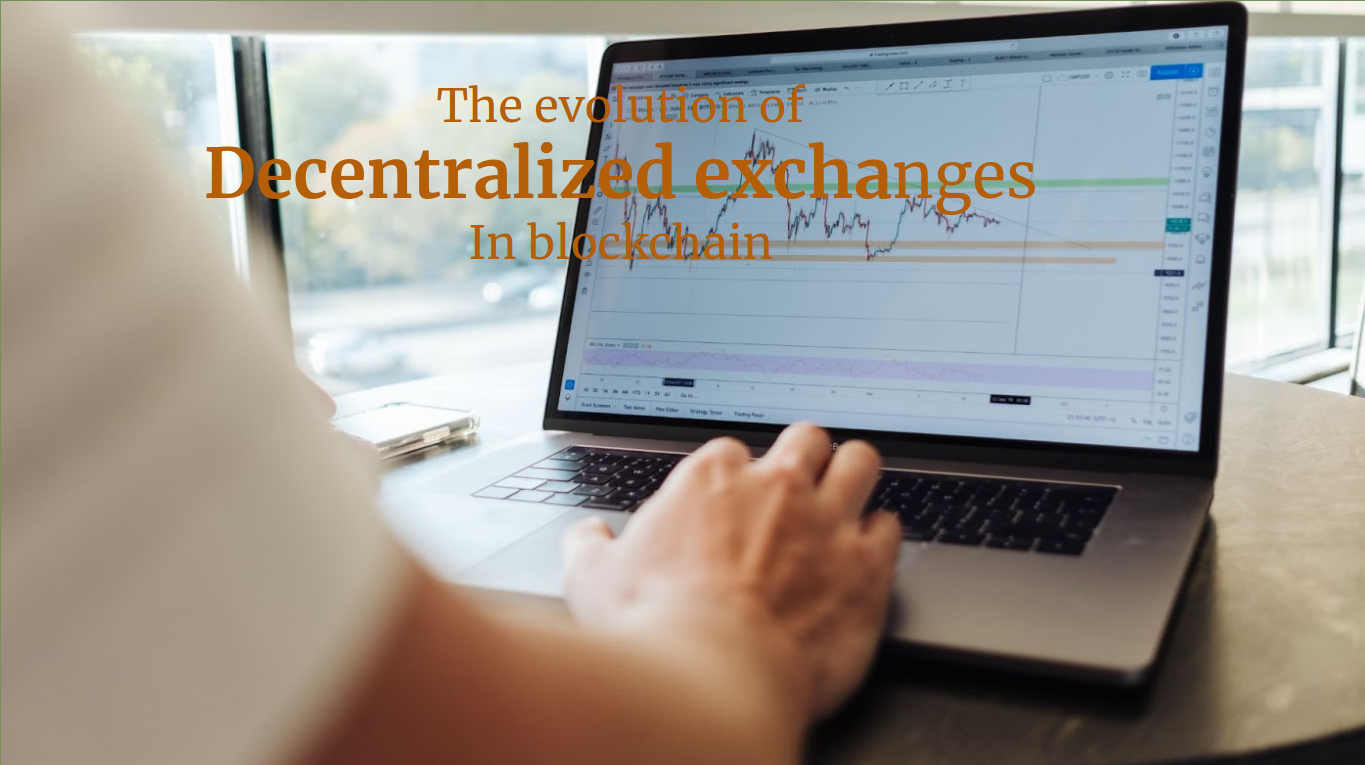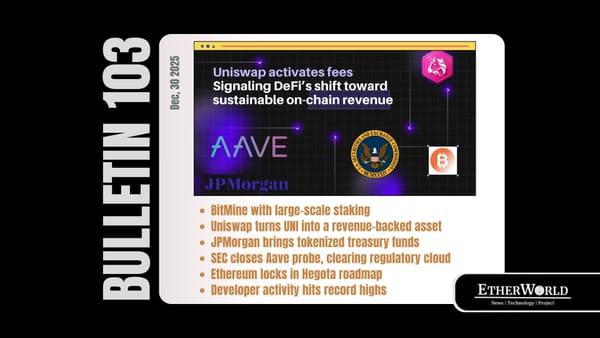Thanks to the blockchain technology, we are heading towards a decentralized economy, without the need for middle men for economic transaction. The cryptocurrency volume of trade is increasing rapidly, and the mainstream adoption of crypto has achieved a global scale. In this blog we will explore the evolution of Decentralized Exchanges.
Centralized Exchanges
Centralized Exchanges Each exchange of this type has its own order book, which accepts and examines all trading orders and matches them appropriately using their own software and servers. They are platforms and applications that allow traders to purchase, sell and exchange cryptocurrencies against fiat currencies or other cryptocurrencies.
Working of Centralized Exchanges
Working We deposit our money which is either bank transfer or credit/debit card or cryptocurrencies. When we're depositing the crypto, we're giving it control. Not from a usability point of view, since we can still trade it or withdraw it, but from a technological point of view. We may not own private keys to the funds, which implies that when we withdraw, we request the exchange to execute a transaction on our behalf. When we're trading, instead of on-chain trades, the exchange assigns balances to customers in its own database.
Weakness We need to trust the exchange of our assets. As a result, we subject ourselves to any counterparty threats.An example would be If a team runs off with the hard-earned BTC or if a hacker cripples the system and steals the funds. This is an appropriate amount of risk for many consumers as they actually stick to trustworthy exchanges with good track records and safeguards to prevent data breaches.
Example Bithumb and Bitfinex are some examples.
Advantages of CEX
Exhange
- They allow easy exchange of fiat to crypto which is helpful for people who are just starting their crypto journey.
User-Experience
- They have a offer more familiar and welcoming interface experience for beginners that are inexperienced with non-custodial cryptocurrency wallets.
Customer Support
- They have a better customer support for people who are new to crypto space and want to start step by step.
Decentralized Exchanges
Every peer-to-peer swapping could be a decentralized exchange. The main distinction in this exchange is that there is a backend on a blockchain. No one is taking control of our funds. Users don't need to trust an exchange to the point we do with centralized exchanges.
Disadvantages of CEX
Security
- Insecurity, risk of loss of funds and robberies due to their centralized functioning.
- They are technically liable and the custodian of user assets. 73 per cent of centralized exchanges take control of user assets, while 23 per cent allow users to manage keys.
- They portray honeypots for hackers and they are accountable for billions of trades every day and save most of them on their servers.
Liquidity
- Lack of liquidity as massive orders are failing to be matched. - Even at an all-time high, the amounts remain low as compared to traditional markets.
Market
- A fractured market results in splits of global liquidity into a few primary markets. There is no strong market leader in terms of value, which raises the liquidity dilemma.
Transparency
- The real costs and trading processes are opaque and involve high trading costs, frequently higher than announced fees and higher delays due to market peaks that are poorly handled. They will make front-run orders, which are illegal.
Users
- Exchanges are filled by pure speculators that are unaware of secure ways to work with cryptocurrencies.
- There main target is to quickly get rich.
Working of Decentralized Exchanges
Decentralized Exchanges are close to their centralized equivalents, but are substantially different. The general trend among them is that transactions are executed on-chain with smart contracts and that consumers should not sacrifice the custody of funds at any point in time.
On-chain DEX
Working In this type of DEX, Everything is done on-chain. Each order is written to the blockchain. This is the most straightforward way, since we do not trust a third party to transmit orders to us. We ask every node on the network to record the order permanently, and end up paying a fee. We'll have to wait until the miner attaches our message to the blockchain.
Weakness The front run is a weakness in this model. Front-run happens in transactions where an insider is aware of an unresolved transaction and uses that information to place a trade before the transaction is completed. The front runner is gaining from details not revealed to the public. A miner sees the order until it is validated, and first ensures that their own order is applied to the blockchain.
Example Stellar and Bitshares are some examples.
Off-chain DEX
Weakness This types of DEXs are decentralized, but they are more centralized as compared to on-chain, since they are hosted somewhere instead of every order being put on the blockchain. A centralized entity solely is in charge of the order book. If the entity is fraudulent, the markets could be played to a significant degree by front-running or distorting orders.
Working A clear example of this is the 0x protocol for ERC-20 and other tokens implemented on the Ethereum blockchain. Rather than functioning as a unique DEX, it offers a mechanism for parties such as relayers to handle off-chain order books. Using 0x smart contracts and other methods, hosts can tap into a combined liquidity pool and relay orders between users. This trade shall be executed on-chain only after the parties have been matched.
Example IDEX and Etherdelta are some examples.
- On-chain V/s Off-chain DEX
Off-chain order books are superior from an user acceptance point of view to those on-chain order books. They're not expected to face with the same speed constraints as they're not using the blockchain as much. Off-chain order book model is still weaker compared to centralized exchanges in terms of speed.
Advantages of DEX
Anonymity
- Centralized exchanges demand a lot of our private details, such as name, id, bank account number, etc., to sign up for an exchange account. In order to comply with government regulations, anonymous crypto-to-crypto exchanges often ask for location information and other personal data.
- Decentralized exchanges, on the other hand, use blockchain information, i.e. the public address of the customer.
Censorship
- DEX thrives on the concept that no one can control it.
- Unlike a centralized exchange, the government can not trace the transactions nor place a bar on them, nor can it forcibly enforce any taxes or other legislation on decentralized exchanges.
Security
- DEX exist across a network of computers.
- It is more complicated to attack due to the absence of a single point of failure.
Trading Volume
- Without a centralized server holding all sensitive details, including user funds, hacking is out of the picture.
- This makes DEX a safer choice and a more practical one for trading in large amounts.
Fees
- DEX needs very little money as compared to CEX for its maintenance.
- DEX does need money to sustain itself, but that can be obtained from charging a very low fee every time a user has been doing transactions.
Disadvantages of DEX
User-Experience
- DEXs are not quite as user-friendly as traditional exchanges. CEXs have a more welcoming experience for beginners that are inexperienced with non-custodial cryptocurrency wallets.
- Also If we forget about our password, we can just reset it. If we forget our seed phrase, our crypto is lost.
Scalability
- Possible blockchain bloat with network congestion and scaling pressure. Blockchain bloat happens as more and more information is added to the blockchain.
Speed
- As each node on the blockchain is required to store and process information, transaction times slow down over time. So transactions take time to validate on blockchains.
Liquidity
- CEXs tend to have more liquidity.
- Liquidity is a measure of how convenient it is to purchase or sell properties at a fair price. In a highly liquid market, bids and asks have little price gap, which ensures strong competition between buyers and sellers. In an illiquid market, we're going to have a tough time seeking someone who wants to sell the commodity at a reasonable cost.
- In case of DEXs, there's not really a supply or demand for crypto assets that we choose to exchange. We may not be able to locate the trading pairs we want to use and if we do, the shares may not sell at a reasonable price.
Fees
- Fees are higher when the network is crowded and when we are using an on-chain order book.
Popular DEX
Binance
- Binance is a cryptocurrency exchange that offers a platform for the exchanging of different cryptocurrencies.
- As of January 2018, Binance was the world's biggest cryptocurrency exchange in terms of trading value.
- Binance has been developed by Changpeng Zhao.
- It has the TradingView charts widget for technical analysis.
- It Enhances security by using Byzantine Fault Tolerance (BFT) and Proof of Stake (PoS).
Balancer
- BalancerExchange allows to swap ERC20 tokens trustlessly across all Balancer’s liquidity pools.
- It is an Ethereum-based, n-dimensional market-maker that allows anyone to or add liquidity to various pools and earn trading fees.
- It makes every effort to be trustless as there are no admin controls, upgradeability, or shutdowns built into the smart contracts.
- Balancer pools charge a percentage of the input amount traded for each trade. The fee is customizable per pool and goes entirely to the pool liquidity providers.
- Balancer's BAL token acts as a governance token to help the project set features such as issuance rewards and whitelisted pools for liquidity mining.
Summary
Decentralized exchanges are essential for blockchain. Should this ever change, one of the biggest advantages of crypto will be gone, which will cause many people to stop using it. Over the years, numerous decentralized exchanges have surfaced, each iterating on past efforts to streamline customer experience and build more powerful trading venues. Users do not need to trust third parties. With the emergence of DeFi, Ethereum-based DEXs saw a huge increase in use. If the movement continues, we're likely to see increased technological advancements across the entire sector. Centralized exchanges will transition to decentralized technologies but innovations must come from both sides. Users need to learn how to defend themselves, and platforms need to have stronger security tools.
Reference Links:
Wikipedia, Defiprime, Consensys, Bianace academy
Image source: Unsplash ________________________________________________________
Disclaimer: The information contained on this web page is for education purpose only. Readers are suggested to conduct their own research, review, analyze and verify the content before relying on them.
To publish press releases, project updates and guest posts with us, please email at contact@etherworld.co.
Subscribe to EtherWorld YouTube channel for easy digestable content.
Support us at Gitcoin
You've something to share with the blockchain community, join us on Discord!









